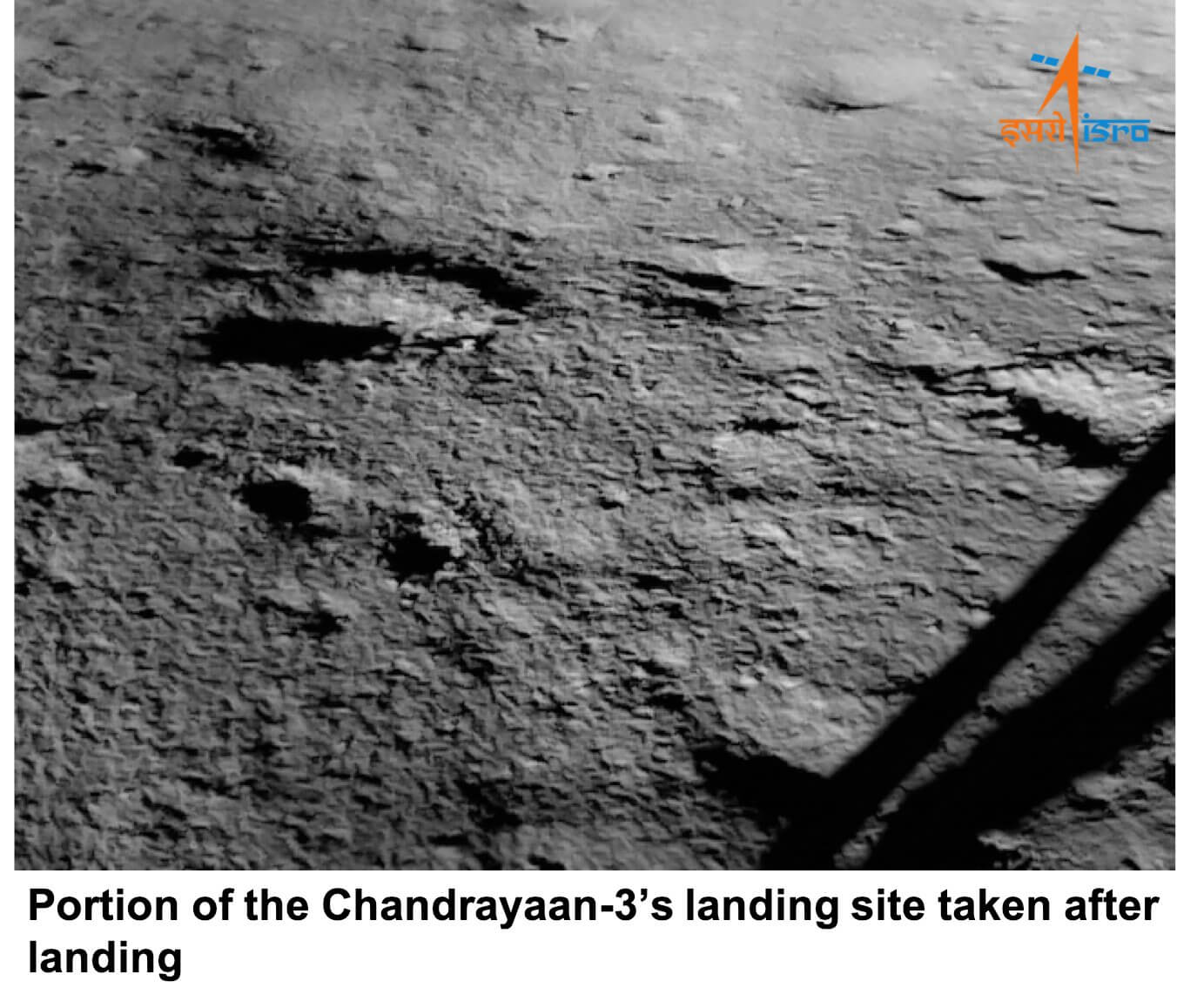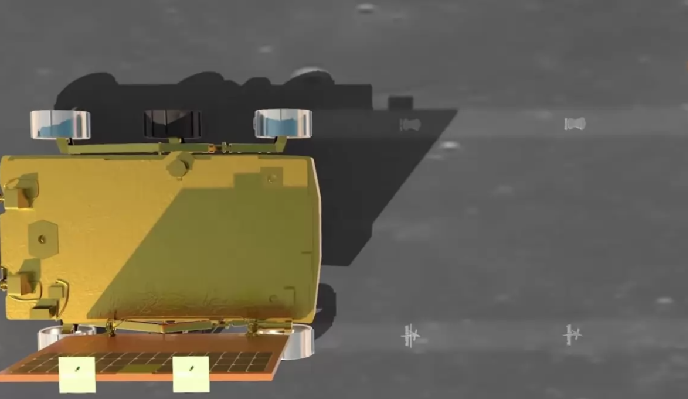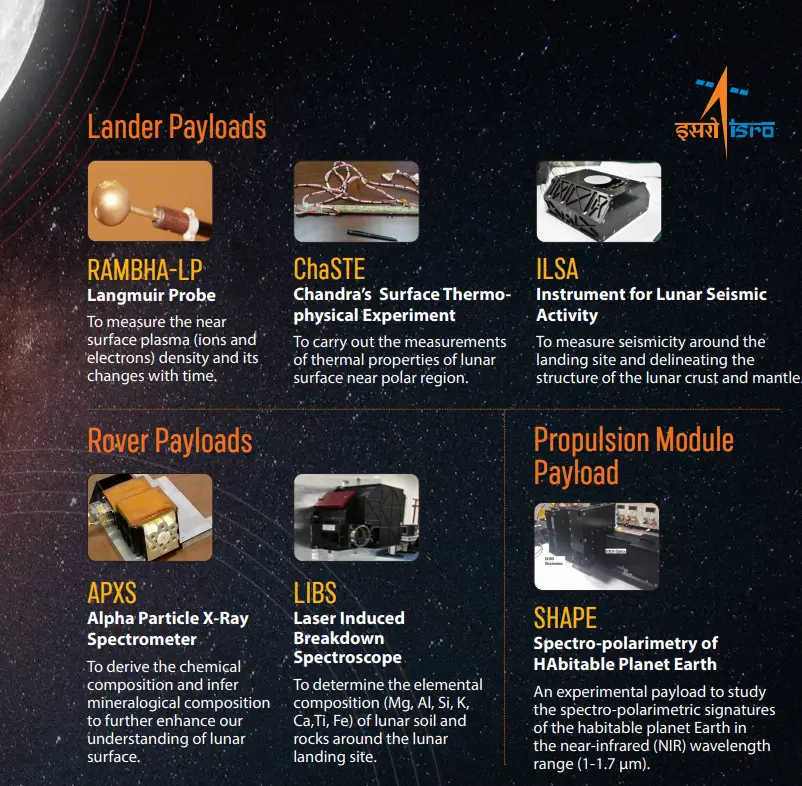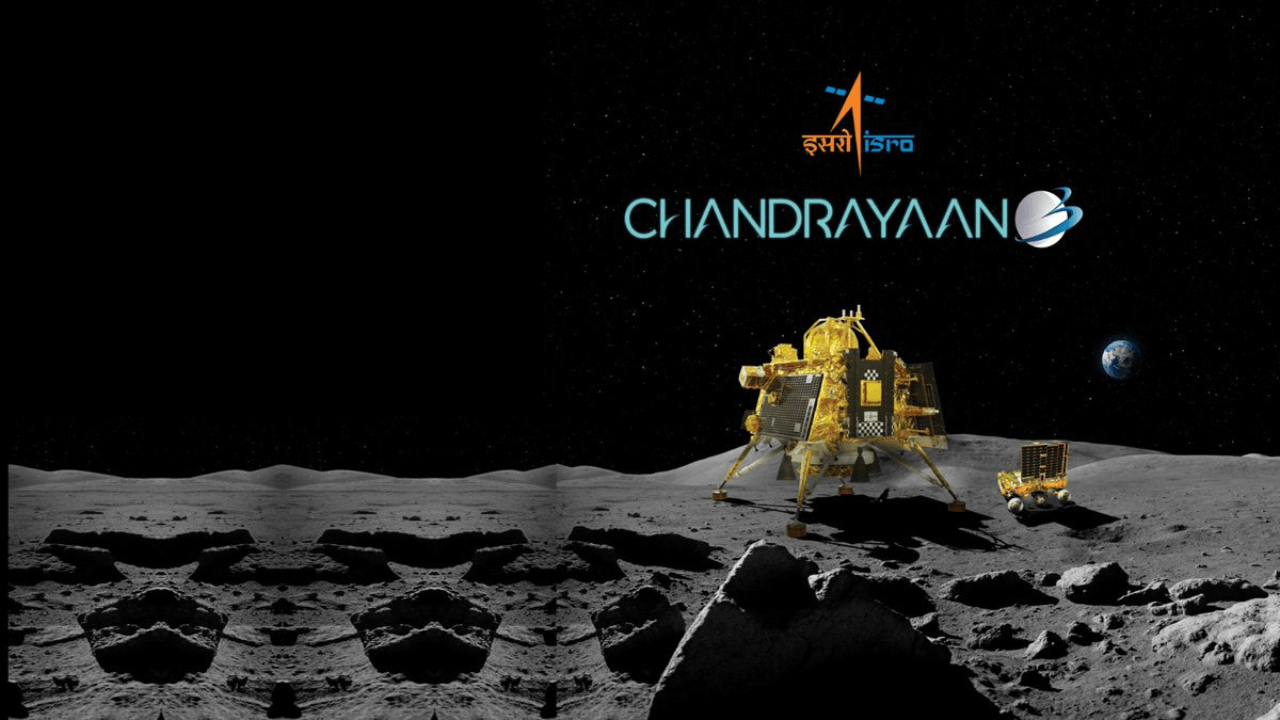India’s lunar exploration mission, Chandrayaan-3, entered its critical concluding phase on August 23rd. This phase involved the intricate process of soft landing on the lunar surface, with the time of landing around 6:04 pm. The Indian Space Research Organisation (ISRO) has confirmed that the mission proceeded as planned, and the live broadcast of this event was broadcast on its YouTube channel on Wednesday at 5:20 pm.

Prime Minister Shri Narendra Modi connected with the ISRO team through a video conference to witness the momentous landing of Chandrayaan-3 on the lunar surface. As soon as the successful landing was confirmed, the Prime Minister spoke to the team and extended his heartfelt congratulations for this remarkable milestone. He emphasized that the success of Chandrayaan-3 reflects the dreams and capabilities of India’s 1.4 billion citizens.
What is a soft landing?
As per the Indian Space Research Organisation (ISRO), Chandrayaan-3’s mission encompasses three primary objectives.
- Firstly, it aims to demonstrate a secure and gentle landing on the lunar surface, ensuring no harm to the spacecraft.
- This “soft landing” involves a controlled descent to achieve a safe and gradual touchdown, crucial for crewed missions and post-landing scientific endeavors.
- Additionally, the mission seeks to display the movement of a Rover on the Moon’s surface. This Rover will traverse and explore the lunar terrain, showcasing the spacecraft’s mobility and functionality.
- Furthermore, Chandrayaan-3 is designed to perform in-situ scientific experiments. This means conducting scientific studies directly on the lunar surface, enabling researchers to gather data and insights from the Moon itself.
The selected landing site is near the Moon’s south pole, specifically at a latitude of 70 degrees. This location provides a unique opportunity for exploration and scientific discovery.
Why is soft landing difficult?
During this crucial phase, precise coordination of engine firings, altitude adjustments, fuel consumption management, and detailed scans of the lunar landscape is essential. The entire process unfolds autonomously, with the spacecraft’s systems executing the necessary maneuvers and operations without direct human intervention. This level of automation ensures that the mission can navigate the complexities of the lunar landing process with accuracy and efficiency.
Why is Chandrayaan-3 landing on the lunar south pole?
Previous lunar spacecraft have predominantly landed near the Moon’s equator due to the ease and safety of this region. The conditions, including terrain and temperature, are better suited for extended instrument operations. Sunlight is abundant, ensuring a steady energy supply for solar-powered instruments.
However, the polar regions of the Moon present distinct challenges. Many areas are devoid of sunlight and experience extremely low temperatures, plummeting to around -230 degrees Celsius. This harsh environment makes instrument operations challenging. Additionally, the presence of numerous large craters adds to the complexity.
Importance
Consequently, the polar regions of the Moon have remained relatively unexplored. The extreme cold could preserve materials and substances in a frozen state, offering valuable insights into the early Solar System. The rocks and soil in these polar areas might hold clues to the origins of our celestial neighborhood.
Interestingly, during its 2019 mission, Chandrayaan-2 also aimed to land in the lunar polar region. However, it encountered difficulties and lost communication after making contact with the surface, preventing a successful soft landing.
Learnings from the Failures of Chandrayaan-2
The Chandrayaan-2 mission in 2019 faced challenges stemming from both software and hardware issues. ISRO Chairman S. Somanath revealed that the approach for the Chandrayaan-3 mission has been altered to focus on lessons from past failures. Instead of building solely on successful components, Chandrayaan-3 adopts a “failure-based” design philosophy. This means that the mission is meticulously considering potential issues and setbacks, aiming to identify possible problems and develop strategies to effectively address them. This approach underscores a proactive stance, aiming to mitigate risks and enhance the mission’s chances of success.
Changes Made
- Chandrayaan-2 faced a critical setback during its descent when it lost control at a distance of approx 7.2 km from the lunar surface. Communication data revealed the loss of control up to around 400 meters above the surface, with the Lander crashing while traveling at a speed of about 580 km/hr.
- Unlike vehicles with wheels, a Lander possesses stilts or legs that are designed to touch down on the lunar terrain. For Chandrayaan-3, these legs have been reinforced to withstand landing and stabilization even at a speed of 3 m/sec (~10.8 km/hour).
- The landing site for Chandrayaan-3 has been expanded in comparison to Chandrayaan-2. Rather than aiming for a specific 500m x 500m zone, the current mission’s target area is a larger 4km x 2.4km region, allowing for greater flexibility in safe landing locations.
- The Lander of Chandrayaan-3 carries a greater amount of fuel compared to Chandrayaan-2. This surplus fuel capacity ensures that the Lander can make on-the-spot adjustments to its landing site if necessary.
- Furthermore, Chandrayaan-3’s Lander is equipped with solar panels on all four sides, as opposed to the two sides on Chandrayaan-2. This configuration guarantees that the Lander can continuously harness solar energy, even if it lands in an unintended orientation or experiences tumbling. By having one or two sides constantly facing the Sun, the Lander remains operational and able to function effectively.
India’s Imprint on the Moon
Chandrayaan-3’s Rover will serve as a symbolic representation of India’s presence on the moon. It will leave distinctive impressions of the ISRO logo and the national flag, featuring the Lion Capital of Ashoka from Sarnath, on the lunar terrain.

ISRO has showcased these logo impressions on the rover through a curtain-raiser movie that was unveiled prior to the mission’s launch. The rover’s rear wheels will imprint the logo as it traverses the surface of the moon, adding a distinct mark of India’s technological achievement and national identity.
About Chandrayaan-3
Chandrayaan-3 was launched on 14th July at 2:35 pm IST as scheduled, from Satish Dhawan Space Centre Second Launch Pad in Sriharikota, Andhra Pradesh. The spacecraft entered lunar orbit on 5 August 2023.
- It serves as a continuation of the Chandrayaan-2 mission, aiming to showcase the capability of safely landing and roving on the lunar surface.
- The mission includes both a Lander and Rover configuration.
- The launch was carried out by the LVM3 (GSLV Mk III) rocket which placed the integrated module in an Elliptic Parking Orbit (EPO) of size ~170 x 36500 km.
- The propulsion module of Chandrayaan-3 will transport the Lander and Rover configuration to a lunar orbit of 100 kilometers.
- The Chandrayaan-3 mission has been allocated a budget of ₹615 crore.

- Weekly Current Affairs 2025 PDF For Bank, SSC, UPSC Exams
- Unsung Heroes of India: 10 Unknown Freedom Fighters You Should Know
- 26 December Current Affairs 2023 in English
- Daily Current Affairs 2025, Check Today’s Current Affairs
- April Month Current Affairs 2024, Download PDF
- June Month Current Affairs 2024, Download PDF

Hello, I’m Aditi, the creative mind behind the words at Oliveboard. As a content writer specializing in state-level exams, my mission is to unravel the complexities of exam information, ensuring aspiring candidates find clarity and confidence. Having walked the path of an aspirant myself, I bring a unique perspective to my work, crafting accessible content on Exam Notifications, Admit Cards, and Results.
At Oliveboard, I play a crucial role in empowering candidates throughout their exam journey. My dedication lies in making the seemingly daunting process not only understandable but also rewarding. Join me as I break down barriers in exam preparation, providing timely insights and valuable resources. Let’s navigate the path to success together, one well-informed step at a time.






